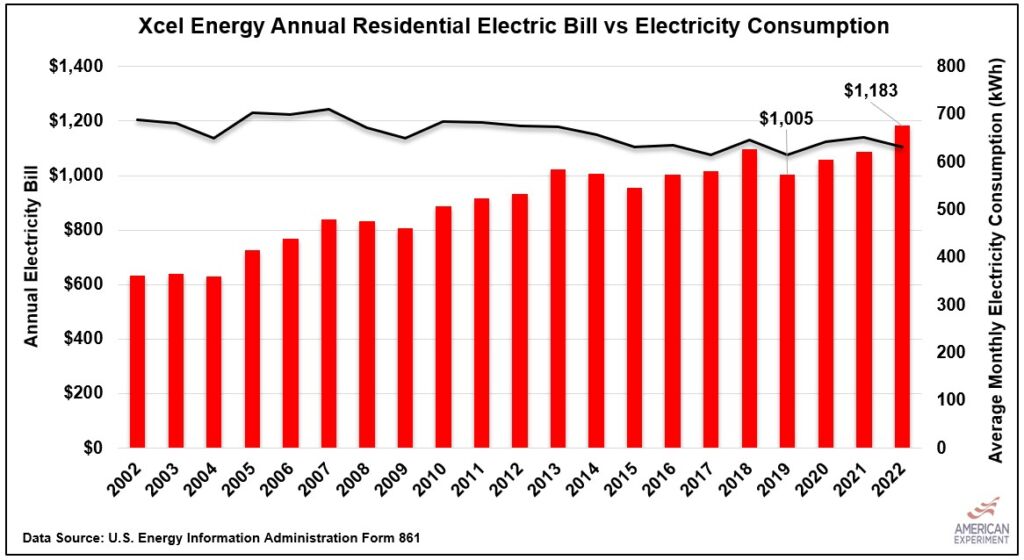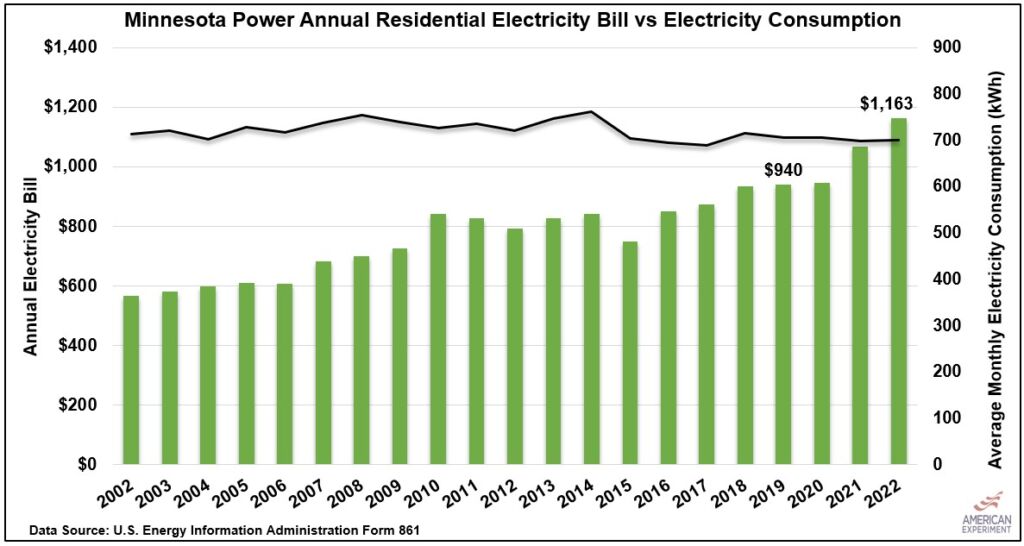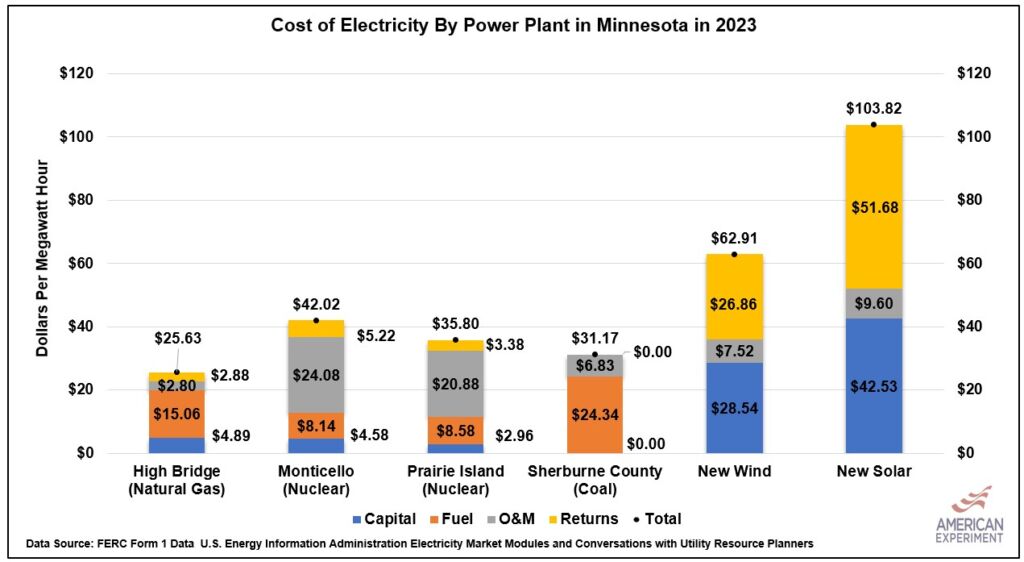Gov. Walz said his energy policies would bring down electricity bills. They’ve gone up, instead
In 2019, Minnesota Governor Tim Walz announced his plan to mandate that 100 percent of Minnesota’s electricity come from carbon-free sources by 2050. As part of his pitch, the Governor claimed that increasing energy efficiency would cause Minnesota household electricity bills to go down.
Instead, bills have increased, and electricity consumption has been virtually unchanged, which is precisely what I argued would happen four years ago.
The receipts
Data from the U.S. Energy Information Administration (EIA) shows electricity bills have increased for each of Minnesota’s Investor Owned Utilities (IOUs) since Walz declared bills would go down as Minnesotans used less electricity. Additionally, there has been no clear trend showing Minnesota households are using less power.
Xcel Energy customers paid $178 more in 2022 than they did in 2019, even though their electricity use was about the same, increasing by 2.85 percent.

Minnesota Power customers saw their annual electricity bills increase by $224 from 2019 to 2022, even as electricity consumption fell 0.8 percent.

Otter Tail Power customers were the only Minnesota families to see their electric bills increase by less than $100, rising by $91 from 2019 to 2022. During this time, electricity use declined by 1 percent.

Why did prices go up?
Supporters of the Governor’s energy plan will correctly argue that the 100 percent carbon-free electricity mandate was not passed until February of 2023, meaning there is no way the legislation could have been responsible for the increase in costs.
This is true. However, the Minnesota Public Utilities Commission (PUC), a five-member panel consisting of members appointed or reappointed by Governor Walz, has been acting as if they have already had this mandate for years, which is why electricity bills continue to climb.
For example, the Walz PUC voted to approve the premature closure of Xcel Energy’s coal-fired power plants decades before the end of their useful life. The PUC has also rubber-stamped billions of dollars in spending on wind, solar, and transmission line projects in the last four years, with billions more in the hopper, including potential spending on electric vehicle subsidies and charging stations.
Increasing quantities of renewable energy cause electricity prices to increase because they are more expensive than conventional sources of electricity, like coal, natural gas, and nuclear power, especially as solar and wind prices have soared since 2019.

Additionally, Minnesota will still need backup sources of electricity, like coal and natural gas plants or expensive battery storage systems, to be available when the wind is not blowing or the sun is not shining.
Lastly, despite the governor’s claims, energy efficiency will not reduce customer payments because Minnesota’s government-approved monopoly utility companies, like Xcel Energy, are guaranteed to make a profit, no matter what. Utility companies will simply raise their prices to make up for selling less electricity, and bills will continue their upward march.
Hopefully, the mainstream media will start asking the Walz Administration tough questions about electricity affordability. He has been in office long enough to have a track record, and that record shows that his predictions have been wrong. That either means he doesn’t understand how the electricity system works, or he’s being intellectually dishonest with the people of Minnesota.
Either way, the people deserve to know the truth; they are paying more instead of less, and this trend will only continue in the future.